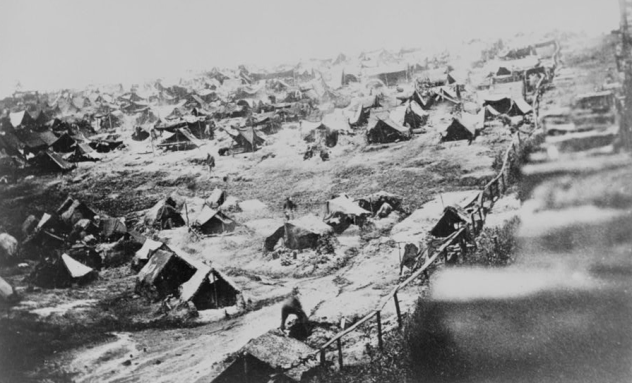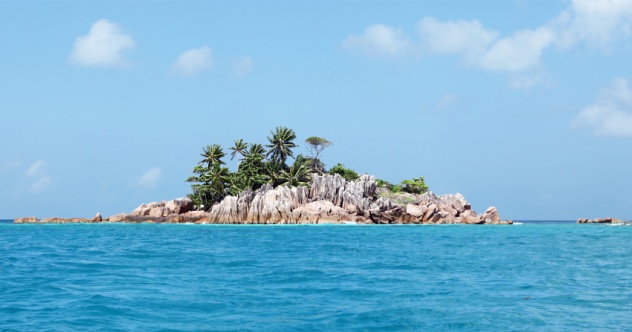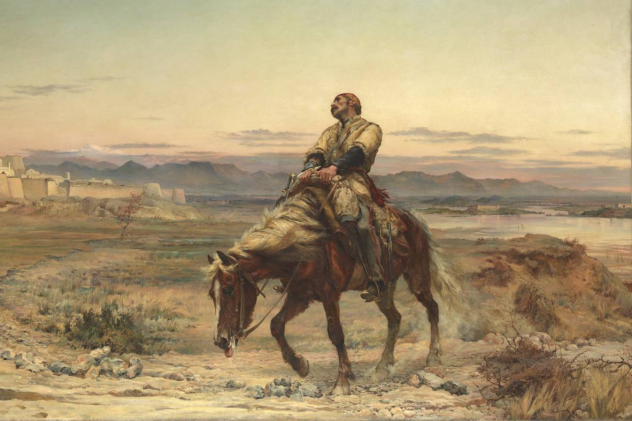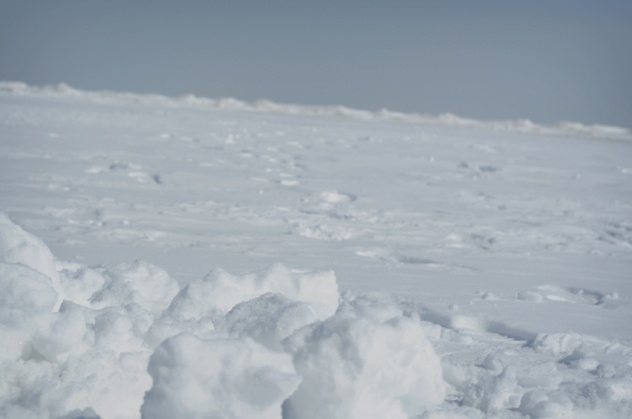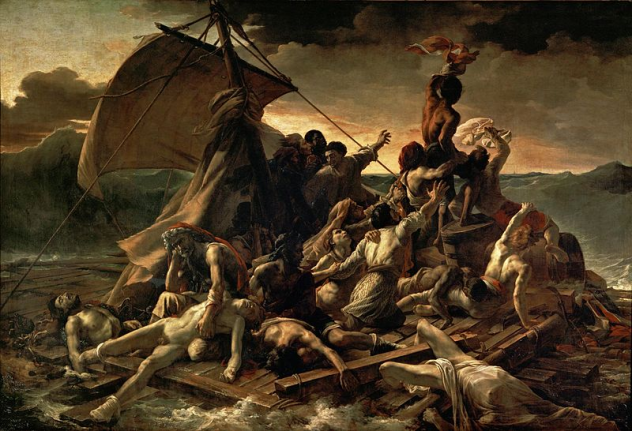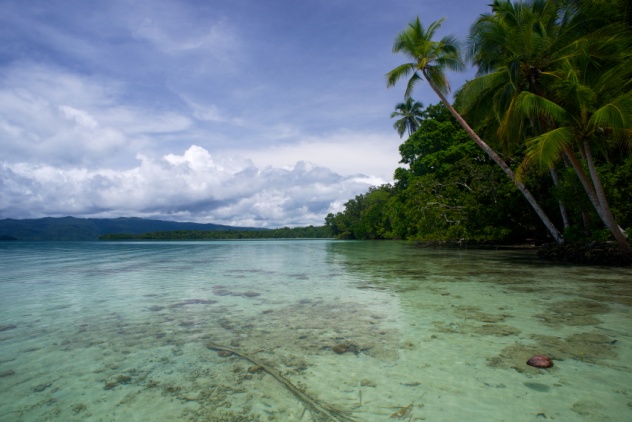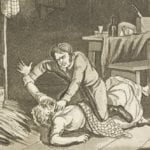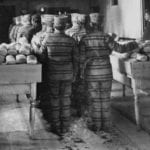10 Sergeant James Landon
Camp Sumter, commonly known as Andersonville, was a military prison operated by the Confederacy during the US Civil War. Even by the low standards of prisons at the time, Andersonville was notoriously horrible. The prison was overcrowded, and prisoners were forced to sleep in the open in disgusting, unsanitary conditions. During the Civil War, 13,000 prisoners died in Andersonville. Following the war, Captain Henry Wirz, the camp’s commander, was tried and hanged for war crimes. Sergeant James Landon, a Union soldier from Iowa, was one of the unlucky ones who ended up in Andersonville. During a skirmish, Landon was shot in the thigh. He pried the bullet out using his knife and ran on foot from Confederate forces for five days before being captured. He was then forced to march for another four days to Andersonville. As a wounded soldier entering Andersonville’s unsanitary conditions, Landon didn’t stand much of a chance. Amazingly, Landon survived. He was held for six weeks at Andersonville before being transferred to another prison camp. He was released from there after two months, as the Confederacy was crumbling and could no longer afford to hold prisoners. Even more amazingly, Landon didn’t receive proper medical treatment until he arrived back in the North. He lived until age 83 and was reportedly healthy and athletic throughout his life.
9 Judah Paddock And The Crew Of The Oswego
When British or American sailors were shipwrecked off the Barbary Coast, their best chance of survival was to make it to Morocco, which was friendly to both governments. However, if they were captured by any of the nomadic Arab tribes of the Saharan desert, survival would be much more difficult. Judah Paddock was captain of the Oswego, a merchant ship that ran aground in 1800. The crew was forced to abandon ship and set out on land, but when a schism developed among the crew, Paddock set off on his own with just three other crew members, one of whom was a useless drunkard. The survivors were captured by Arabs, who turned them into slaves. The new slaves were treated badly. They were flogged, starved, and forced to sleep outside on a regular basis. As slaves, they were the most valuable as commodities and were often traded or sold from one tribe to another. Paddock believed that this was the only reason they weren’t killed on the spot (although this didn’t save some of the Oswego’s other survivors, who ended up murdered). Paddock came to be owned by a man named Ahamed, whom Paddock convinced to take him to Morocco to be ransomed. But even that required a difficult journey, as well as careful negotiation, and Paddock was not able to save his entire crew.
8 Robert Jeffrey
Robert Jeffrey was a British seaman who was pressed into service on a Royal Navy sloop called the Recruit commanded by Captain Lake during the Napoleonic Wars. Impressment was a form of conscription practiced by the Royal Navy at the time, so naturally, Jeffrey was resistant to serving on the Recruit. Jeffrey was caught stealing beer from the ship’s store. As punishment, Captain Lake decided to maroon Jeffrey on a desert island without any supplies. When Lake’s superiors found out what had happened, they ordered him to go back and retrieve the stranded seaman. Upon returning to the island, they found no trace of him and assumed he was dead. An inquiry was held, and Captain Lake was dismissed from his post. Jeffrey, in fact, had managed to survive by eating limpets and drinking rainwater. After nine days and some unsuccessful attempts to flag down passing ships, Jeffrey was rescued by an American ship. The ship took him back to Massachusetts, where he lived for a number of years. Only later did the British Government find out that Jeffrey was still alive.
7 Dr. William Brydon
In 1839, British soldiers occupied Kabul in an effort to prop up a friendly ruler and prevent Afghanistan from allying with Russia. However, after just two years of occupation, they lost control of the city and were forced to retreat. A group of 4,500 soldiers and 12,000 civilians left Kabul for India on a journey that was difficult and dangerous. Not did only did the group move slowly, but temperatures dropped below freezing, and they came under attack from Ghilzai warriors, as well as the forces of Muhammad Akbar, an Afghan warlord. After only five days of retreat, 12,000 had been massacred, and the British army was totally surrounded. One of the last left alive was Dr. William Brydon, an army surgeon who was part of a group of about a dozen trying to make it to Jalalabad. Riding a wounded pony, Brydon was able to fend off attacks from pursuing Ghilzai swordsmen, despite losing his own sword, until he was close enough to Jalalabad to be spotted by sentries, who came to his aid. Of the entire column that left Kabul, Dr. Brydon is the only person known to have survived.
6 The Overland Relief Expedition
In the winter of 1897, a fleet of eight whaling vessels, along with 265 crew members, was trapped by ice in the Arctic Ocean. Because of the thick ice, it would be six months before rescue vessels could reach the trapped ships, and the crews stood no chance of survival without food and supplies. The dangers of the Arctic were well-known, and the situation seemed dire. Just two decades earlier, 13 vessels had been lost in the same area. Sensing the urgency of the situation, President McKinley ordered the US Coast Guard cutter Bear, under the command of Captain Francis Tuttle, to deliver supplies to the trapped whalers. The Bear sailed as far north as the ice would allow and landed three crew members on the coast of Alaska. Using dogsleds, the three traveled over 2,400 kilometers (1,500 mi) across the frozen tundra, where the temperature sometimes dropped to –51 degrees Celsius (–60 °F). The entire journey took three months. When they finally reached the ships, they were able to deliver critical supplies to the whalers, many of whom were suffering from scurvy. The Bear itself was not able to reach the area until July, when the ice had broken up enough to allow passage. Until they did, Captain Tuttle had no idea if the overland journey had been successful. It had, and the Bear was able to bring the whalers back home, the majority of them having survived.
5 The Darien Exploring Expedition
The Darien Exploring Expedition in 1854 was a US venture to explore the area that would later become the Panama Canal. A party of 27 men under the command of Lieutenant Isaac Strain, traveled deep into the Panamanian jungle, seeking a water route from Caledonia Bay on the Atlantic Ocean to Darien Harbor on the Pacific. However, for some reason, they only brought enough provisions for 10 days, and they soon became lost and separated. At one point, the party met a group of friendly natives, who they hoped would lead them back to a river that led to Darien Harbor. Instead, they were led in the wrong direction and became even more lost. Still, the party voted to continue on rather than return to their ship. This proved to be a costly mistake, as they were farther off course than they thought and their maps of the area were incomplete. Trudging through the jungle, they encountered dense brush and relentless mosquitoes. They ran out of food, and their feet became swollen from walking. Strain, an experienced adventurer, declared that it was the most difficult jungle that he had ever traversed. At one point, they built a raft, only to be forced to abandon it soon after. With no choice but to continue on foot until they reached the Pacific, men began to drop dead of disease and malnutrition. Eventually Strain managed to reach the Pacific coast, where he acquired canoes and supplies to take back to his men, who could no longer travel. He returned to find some of them dead and many others starving, filthy, and sick. Nine of the expedition’s men died.
4 Alexander Scott
One of the most dangerous sailing routes of the 19th century took ships between the Canary Islands and the western coast of Africa. Challenges along this route included strong currents blowing toward shore, sandy air, and shallow water. Shipwrecks were common. Alexander Scott was a 16-year-old sailor from Liverpool, England, whose ship, the Montezuma, was wrecked off the Saharan coast in 1810. According to his own narrative, Scott was captured by an Arab tribe, which took him as a slave. They forced him to travel with them to a place called Hez el Hezh. The arduous journey across the Sahara took over two months, during which Scott encountered very little in the way of civilization. When they arrived at Hez el Hezh, Scott was told that he must convert to Islam or be killed. Scott said that he refused to convert, although he didn’t say how he managed to escape being killed. Although he remained alive, Scott was anything but free. He remained a slave for six years, wandering with various Arab tribes around present-day Niger and Mali in conditions that were often difficult and dangerous. Eventually, Scott managed to escape and contact the British consulate in Morocco.
3 Wreck Of The Medusa
In 1816, the French ship Medusa was sailing for Senegal on a diplomatic mission. Included among the 400 passengers and crew were many notable French politicians, soldiers, and diplomats. However, for some (really dumb) reason, the French selected an inexperienced captain to command the ship, and the Medusa soon ran into trouble. Despite clear weather and calm seas, the Medusa ran aground on a reef in the Atlantic Ocean. The crew was forced to abandon ship but didn’t have enough lifeboats to go around. The most important passengers got into the lifeboats, and the remaining 150 were forced to float on a raft made of lashed-together masts and beams. The situation on the raft was grim. First, the lifeboats tried to tow it, but they ended up having to cut it loose. The raft was also too heavy, so food and other supplies had to be thrown overboard. Even then, the raft remained submerged under as much as 1 meter (3 ft) of water. The first night on the raft, 20 people were either killed or committed suicide, and by the fourth day, food had run out and the survivors had to resort to cannibalism. When the raft was finally found after 15 days at sea, fewer than 15 men remained alive.
2 Jack Renton
Jack Renton was a Scottish sailor who had the misfortune of being shanghaied while in San Francisco in 1868. After escaping in a small boat and spending 40 days at sea, Renton washed up on one of the Solomon Islands. He was captured by a native tribe, the Malaitans, who were notorious among sailors as headhunters. However, Renton managed to amaze his captors with his survival and language skills. They adopted him into the tribe, and the chief even started referring to him as a favorite son. Renton also distinguished himself as a warrior, taking part in headhunting expeditions and skirmishes with other tribes. After eight years, Renton decided he’d had enough and found a ship to take him to Australia, where his tales from the Solomons made him an instant celebrity. He occasionally returned to the islands on humanitarian expeditions. It was on one of these return trips that he was captured and decapitated by one of the Malaitan’s rival tribes. Renton’s story lives on, however, in Malaitan oral traditions.
1 Captain James Riley And The Commerce
Captain James Riley and his crew were wrecked off the coast of the Sahara when their ship, the Commerce, ran aground in 1815. After a failed attempt to escape by boat, the men were captured by nomadic tribes, who took them as slaves. As slaves, the men were held in terrible conditions and forced to march across the desert with very little food or water. Often, the only sustenance available was camel milk or urine. Suffering from exhaustion and malnutrition, the men lost weight and one of them even resorted to chewing on his own flesh. (Some weighed as little as 18 kilograms [40 lb].) Their captors were cruel even when they were trying to help; the cure for dysentery was to brand those afflicted with a heated knife on different parts of the body. Maintaining the role of captain and looking out for his men’s freedom, Riley negotiated to be sold to an Arab trader named Sidi Hamet, who agreed to take Riley and four other crew members north, where they could be ransomed. During the long and arduous journey, they traveled as much as 80 kilometers (50 mi) a day by camel and had to endure all sorts of dangers, including ambushes. Riley’s ordeal lasted two years. When he returned to the United States, his account of his journey became a best seller.
